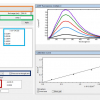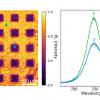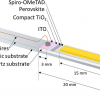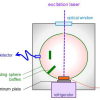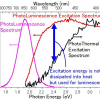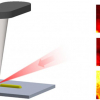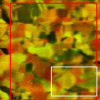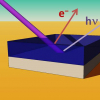Focus on Solar
This note presents a reinvestigation and revaluation of the quantum yield of 2AMP in 1 M H2SO4 using quinine bisulphate in 1 M H2SO4 as the reference standard with a modern spectrofluorometer.
Photoluminescence is proportional to the number of charge carriers in the perovskite and, therefore, is sensitive to charge transfer into adjacent layers. This makes photoluminescence-based techniques invaluable for investigating the performance of new extraction layers.
Using time-resolved X-ray photoemission spectroscopy, scientists are for the first time analysing at the femtosecond scale the processes in a model system for organic solar cells.
University of Tsukuba researchers have used electron spin resonance spectroscopy to take a molecular-level look at what happens in perovskite solar cells when they are operating, to determine the factors that affect their performance.
Tohoku University researchers have improved a method for probing semiconducting crystals with light to detect defects and impurities.
A type of photothermal spectroscopy is being used to measure thermal energy to understand more about the processes of energy-converting systems like leaves during photosynthesis.
Heidelberg University physicists develop new method based on UV photoelectron spectroscopy to show the energetic landscape within solar cells made from organic materials.
Using deep-level transient spectroscopy, a team of scientists at The University of Manchester has solved a key flaw in solar panels after 40 years of research around the world.
Researchers from Brown University, Rhode Island, USA, have demonstrated a way to use terahertz spectroscopy on the nanoscale.
A new method, using deep-ultraviolet continuum pulses, has been developed to efficiently measure electron transfer in dye-sensitised, transition-metal oxide photovoltaics.
There are a number of advantages of Raman microspectroscopy, including its the ease of its application, as in many cases no or very little sample preparation is needed and the experiments are performed at atmospheric pressure.
Using ultrafast spectroscopy, researchers from Lund University, Sweden, have successfully measured in detail the flow of solar energy, in and between different parts of a photosynthetic organism. The result is a first step in research that could ultimately contribute to the development of technologies that use solar energy far more efficiently than what is currently possible.
Edinburgh Instruments have installated one of their fluorescence spectroscopy systems at the brand new Vidyasirimedhi Institute of Science and Technology (VISTEC) in Thailand.
A Lawrence Livermore engineer has been awarded $570,000 through the US Department of Energy SunShot initiative to explore spectroscopic technology as a means of detecting moisture build-up in solar cells.
X-ray spectroscopy at BESSY II reveals inhomogenous distribution of chlorine in a special class of perovskite materials, which could help enhance efficiencies of perovskite thin film solar cells by controlled processing to optimise the chlorine distribution.

